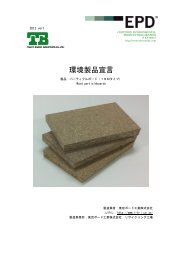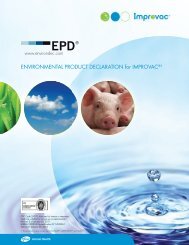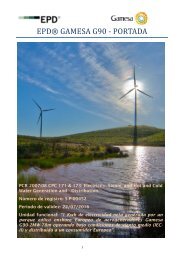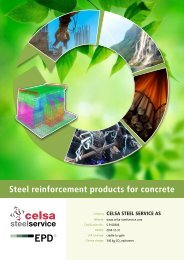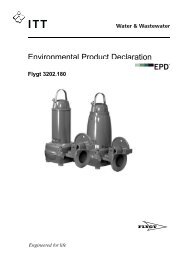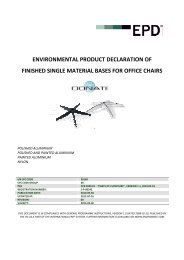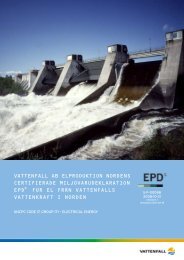Vattenfall aB GeneRatIOn nORDIC CeRtIfIeD enVIROnmental ...
Vattenfall aB GeneRatIOn nORDIC CeRtIfIeD enVIROnmental ...
Vattenfall aB GeneRatIOn nORDIC CeRtIfIeD enVIROnmental ...
You also want an ePaper? Increase the reach of your titles
YUMPU automatically turns print PDFs into web optimized ePapers that Google loves.
4 Additional environmental information<br />
In conjunction with the retrial of the regulation permits in the early 1990’s, <strong>Vattenfall</strong> implemented<br />
extensive restoration of biotopes, amounting to 144 ha (55 %) of streaming water in Juktån.<br />
In addition, 14,6 ha (almost 6 %) new biologically important area was created, mainly by opening<br />
previously closed off by/side-runs, etc. There are now vital populations of grayling and trout.<br />
Conclusions:<br />
• Despite reduced average annual discharge, the critical biotope area (i.e. the area covered by<br />
water during winter conditions) has only been marginally reduced.<br />
• As a result of biotope restoration, Juktån now provides improved conditions for biological life<br />
compared to the timber-floating period.<br />
• Reopening of previously closed off waterways has created important reproduction areas for fish.<br />
Umluspen (quality level C5)<br />
Historical data from the area around the power station at Umluspen is nonexistent, and a<br />
characterization key has been applied to before exploitation conditions. It is assumed that<br />
the area harboured 40 % critical biotope, 40 % rare biotope, and 20 % general biotope.<br />
A characterization key has been applied to the after exploitation conditions as well. Land<br />
and water areas after exploitation have been assumed to be 31 % technotope and 69 %<br />
general biotope.<br />
Stornorrfors (quality level C2)<br />
Historical data from the area around the power station at Stornorrfors is insufficient, and<br />
a characterisation key has been applied to before exploitation conditions. Characterisation<br />
of after exploitation conditions is based on data from fieldwork and literature.<br />
Technotopes existed even before Stornorrfors was constructed because of three older<br />
smaller power stations in the same area. The present reservoir inundated the older Norrfors<br />
reservoir drawdown zones, which were thus converted from technotope to general<br />
biotope. There was also a spillway within the area, which is now inundated upstream the<br />
present one. The reservoir and the stretch of the river with an ecological flow were influenced<br />
by timber-floating and fishing operations prior to the construction of Stornorrfors.<br />
One part of the river stretch is characterised as critical biotope today, and harbours migrating<br />
red-listed wild salmon. <strong>Vattenfall</strong> has implemented activities to facilitate fish migration.<br />
There remain 5,4 % critical biotopes and 2 % rare biotopes after exploitation.<br />
The following map show biotopes and biotope categories at Stornorrfors power station<br />
after exploitation.<br />
© <strong>Vattenfall</strong> AB Generation Nordic 2008<br />
30



